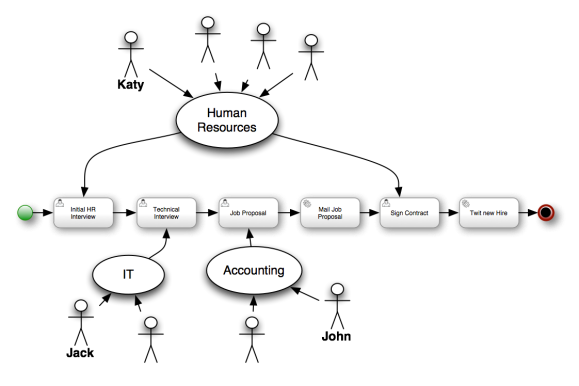Salaboy is back again with some great news! They are planning a meeting
in Barcelona to show the new tooling provided by Drools & jBPM 6.
The event will be hosted by BarcelonaJUG as they did last year but this year we are aiming to do a more workshop
oriented event, where you can attend with your laptop and play with the
tooling. The main goal of the workshops is for you to have the tooling
installed and working in your own environment. We will also be giving
some guidelines about how to contribute with the community projects, so
if you are interested in being part of these amazing communities this is
a very good opportunity to get you started.
The event
The location of the event will be in "La Fontana" (The fountain):
Carrer Gran de Gràcia, 19008012 Barcelona
On the 10th of December we will be starting at 6:30 pm, but feel free to be there before that time because I'm sure that we will be setting up the place at least an hour earlier.
It will be good if you show up with your laptop, because we will be
trying to showing in your own environment how the tools work. A couple
of days before the meet up I will be sharing some links that you will be
able to download and pre install if you want to, to save some time on
the event for more important and advanced questions. Another important
thing that you can bring to the event is your 3G dongle if you have one.
We are not 100% sure about the internet connectivity of the venue, but
for some of the demos internet connection will be required, so be
prepared to share some bandwidth.
That's all for now, stay tuned!
Don't hesitate to drop a comment if there is something in particular that you want to see on the event.
PS: the event will be in Spanish, but if you are from abroad and want to
attend we will do our best to share as much as we can with you.
El Evento (Spanish)
Nos estaremos reunion en "La Fontana" ( en el centro de Barcelona. La dirección del evento sera:
Carrer Gran de Gràcia, 19008012 Barcelona
El 10 de Diciembre 2013 estaremos comenzando a las 6:30 pm, pero siéntanse libres de llegar un poco antes ya que estaremos preparando el lugar como mínimo una hora antes de empezar.
La idea principal del evento es poder compartir con ustedes las
novedades de los proyectos comunitarios Drools y jBPM y al mismo tiempo
que ustedes se lleven instaladas las herramientas provistas por estos
proyectos en sus laptops. En los días previos al evento voy a estar
compartiendo algunos links con las herramientas para descargar e
instalar. Con esto ahorraremos algo de tiempo para entrar mas en detalle
durante la charla y no perder el tiempo instalando la herramienta o
copiando archivos, así que visiten el blog o ponganse en contacto si no
reciben los mismos.
Aparte de sus laptops seria importante si pueden conseguir Dongles 3G
para tener conectividad a internet durante el evento, ya que algunas
demos requieren conectarse a servidores remotos para bajar ejemplos. En
el caso de tener un Dongle 3G por favor llevenlos al evento y estén
dispuestos a compartir conectividad con el resto de los participantes.
Eso es todo por ahora! No duden en dejar un comentario sobre sus
intereses personales sobre el evento. Siempre es bueno saber cuales son
las expectativas de la audiencia.
PD: el evento sera en español.














